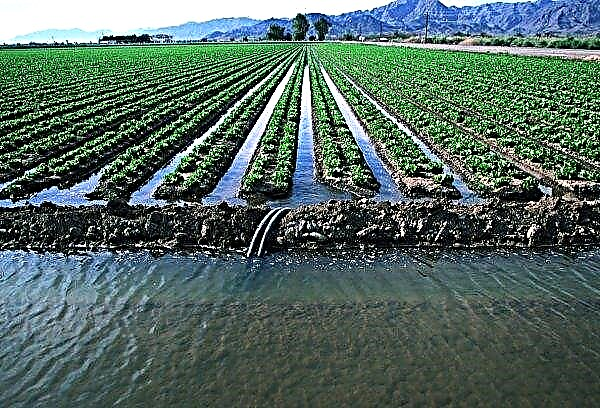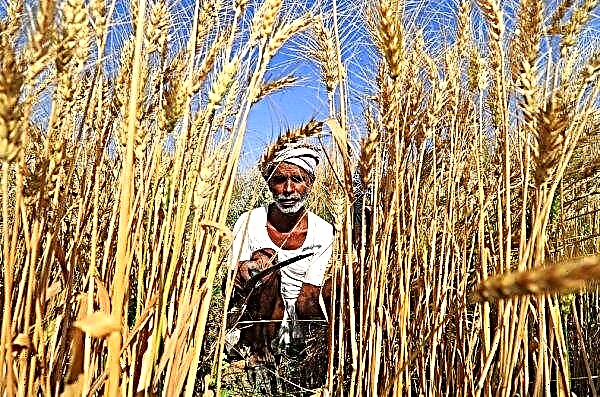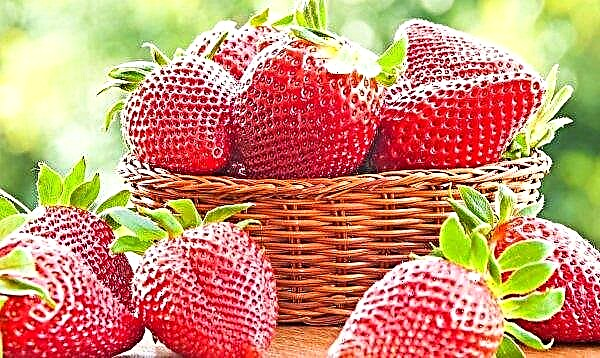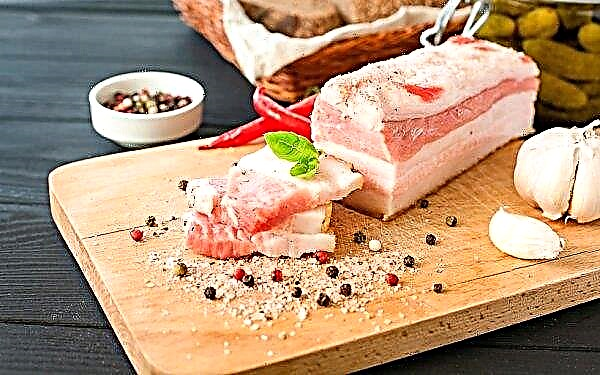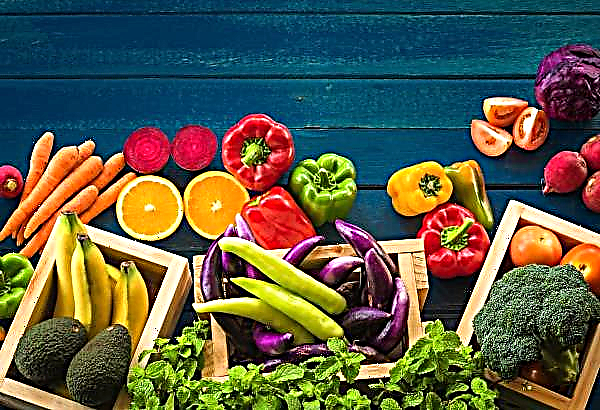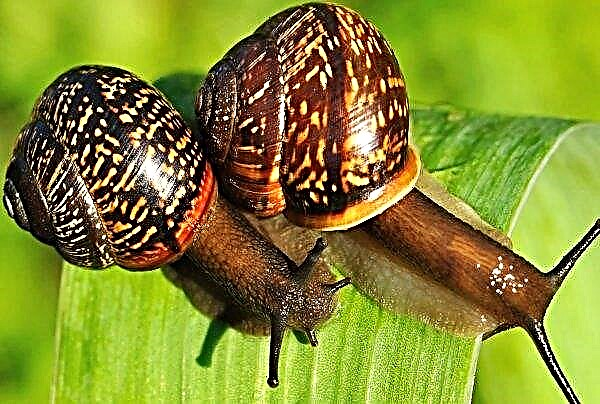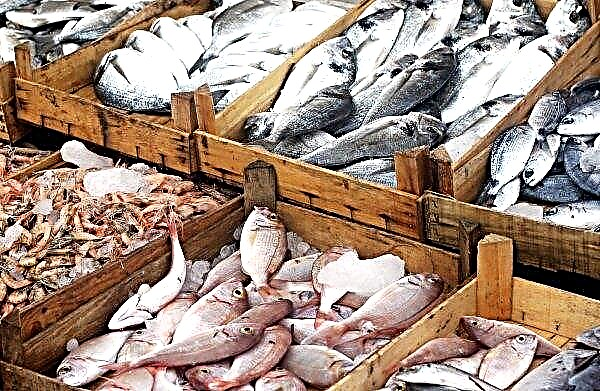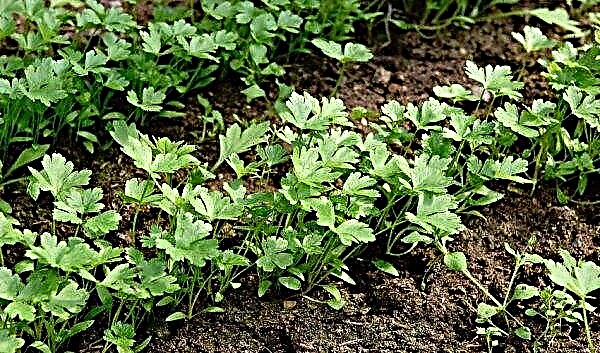Among domestic summer residents, the growing popularity of growing Chinese cabbage pak choi, which stands out for its outlandish appearance and useful properties. The culture is characterized by unpretentiousness in leaving, gives excellent indicators of productivity. About what is remarkable for this unusual cabbage, and how to grow it correctly - read below.
Description of Chinese cabbage pak choi
Pak-cho Chinese cabbage is an annual crop belonging to the cruciferous family, although the plant may be biennial, depending on the variety.
The culture has the appearance of a large-leaf lettuce, its leaf plates reach up to 65 cm in height. The leaves are collected in a compact, upright outlet up to 30 cm in diameter. Sheet plates have a neat appearance - large, with a slightly corrugated surface. In the lower part, the culture has a bulge formed by weighty, tightly pressed to each other petioles.
Did you know? Chinese cabbage refers to negative calorie foods. This means that the human body spends more energy on the digestion of a vegetable than it receives when it is eaten.
There are several varieties of pak choi:
- Joi choi - differs in dark green coloring of a leaf and a snow-white petiole;
- Shanghai green - has leaves of a bright green hue;
- Red choi - characterized by an unusual color of leaves: green at the base and purple at the top.
The best varieties
There are a huge number of varieties of pak choi, which differ in external data and ripening dates.
The most popular varieties:
- Vesnyanka - has wide, juicy petioles. Green leaf blades with wavy edges. The variety belongs to early ripening; its ripening occurs 25 days after planting.

- Goluba (early ripening variety) - is a semi-spreading cabbage, reaching a height of up to 45 cm, its diameter reaches 40 cm. Leaf plates have a smooth surface, they are distinguished by an oval shape. A ripened vegetable can reach a mass of up to 1 kg.

- Corolla - is a mid-season variety, has small leaves of a dark green hue. Petioles are short, narrowed, white. The weight of the vegetable reaches 1 kg.

- Purple miracle (hybrid variety) - ripens in 35 days and is early ripe. The leaf rosette is not sprawling, medium-sized. It is characterized by a violet-green color of leaves, having a slight waxy coating.
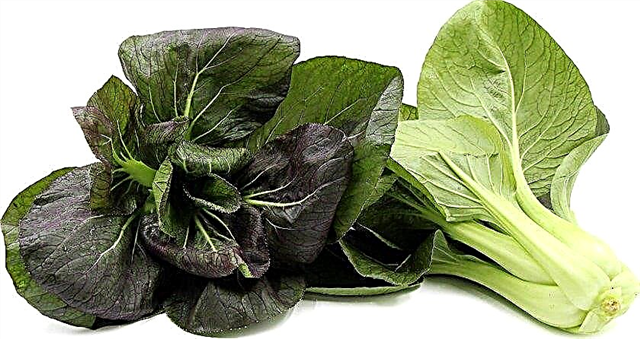
- Lynn (hybrid variety) - is a stunted crop of early ripening. The leaves are dark green in color, have a rounded shape, with slightly wavy edges. The mass of ripened vegetable reaches 350 g.

Cabbage properties
Pak Choi is a storehouse of vitamins A, C, K, E, which positively affect a person with moderate use of the product. The vegetable has long-term storage properties in fresh form, with proper packaging it will retain a presentable appearance and healing properties for a month. Pack the product in polyethylene and put in the refrigerator. Pak-choy has neutral flavoring characteristics, has moderate juiciness, is universal in the preparation of first and second courses.
Benefit
- Among the advantages of Chinese cabbage are:
- has a low calorie content (only 13 kcal per 100 g of product), therefore it is indispensable when dieting;
- promotes the removal of toxins from the body, lowers blood cholesterol;
- the minerals contained in the vegetable help strengthen the walls of blood vessels;
- helps to improve the elasticity of the skin;
- due to its fiber content, it is indispensable for problems with digestion of food;
- alkaloid lactucin, which is part of the vegetable, helps to normalize the pressure;
- helps with puffiness;
- It is widely used in pediatrics in the treatment of vitamin deficiency in preschool children.
Harm and contraindications
There are a number of contraindications associated mainly with excessive consumption of vegetables. This product should not be eaten if there is an allergic reaction to any of its varieties. The product is contraindicated in people with stomach diseases due to the high content of citric acid. Patients with gastritis with high acidity should exclude pacchoy from the diet.
Growing Chinese Cabbage Pak Choi
Cultivation of this agricultural crop will not require special skills, the main thing is to follow the basic rules of planting and care.
Did you know? The use of pak-choy cabbage during pregnancy eliminates fatigue and lethargy.
Features and timing
The sowing period lasts from mid-April to late August. The best time for sowing is considered the beginning of July, in this case you will get a big crop. In addition, it is more likely that the plant will not release flower arrows.
The plant is unpretentious to the choice of soil, but nevertheless it is better to choose a neutral soil for planting. To achieve a reduction in soil acidity, 200 g of wood ash must be added to each 1 m² of land. Planting should be carried out on fertilized soil, which will help to achieve greater productivity. Fertilize the soil with manure at the rate of 10 kg per 1 m².
Sowing in open ground is carried out according to the scheme:
- Between the holes observe a distance of 20 cm, between rows - 30 cm.
- Prepare wells 4 cm deep.
- At the bottom of each hole lay one seed, sprinkling on top of the soil.
- Carry out watering.
Proper Care Factors
Care of the beds consists in timely watering, fertilizing and loosening the soil (after each watering and rain).
Every day it is necessary to check the leaves for stains or rot in order to prevent the development of fungal infections in time. Damaged or sluggish sheet plates should be removed.Important! The procedure of cultivation should be carried out with extreme accuracy, because the rhizome of this plant is fragile and not deeply rooted deep into.
Watering
When watering a crop, the main thing is to observe the measure. Excessive watering can rot the bottom of the plant. But the dryness of the earth will lead to the appearance of sluggish, incomplete leaves.
In dry, calm weather, the beds are watered once every 3 days (20 liters of water per 1 m²). The period of active growth of the culture will require an increase in the volume of introduced water up to 30 liters per 1 m².

Feeding
Fertilizers are applied 1-2 times for the entire vegetation period of the plant.
You can make liquid top dressing in the form of a nettle infusion, which is made and used according to the following scheme:
- Fresh nettle (2 kg) pour 10 liters of water.
- The solution should be fermented within 7 days.
- Strain the infusion through cheesecloth.
- Water infused with infusion (1:10), water the beds.
Pest and Disease Control
Often, Chinese cabbage is attacked by cruciferous fleas, destroying the crop.
In the fight against this pest, the following agricultural practices are used:
- frequent cultivation of soil;
- timely watering;
- application of wood ash in the amount of 200 g per 1 m²;
- the use of a soap solution, which will require 300 g of soap dissolved in 10 liters of water.
Important! In order not to provoke infectious diseases of the root system of culture, watering is carried out with water at a temperature of + 20 ° C.
Harvesting
After sowing seeds of early ripe varieties, you can collect the first crop after 25 days. Cabbage is cut at a level of 3-5 cm from the soil, so that the remaining rhizome in a month gives a new crop.
Harvesting by tearing cabbage together with the root is advisable at the end of September, because weather conditions will no longer allow you to grow new vegetables.

Recommendations for preparation and use
If there are no contraindications, the product is consumed daily. It is not necessary to eat a raw vegetable; there are simple recipes for its preparation, which are suitable for daily use.
Chinese cabbage goes well with meat and mushrooms, used in the preparation of various salads. Boiled and steamed, the vegetable, although it loses half of its beneficial properties, is still perfect for observing dietary nutrition.
Growing Chinese cabbage pak choi does not require special skills. This exotic plant has a number of useful properties that will help to strengthen health and saturate the body with useful substances.





